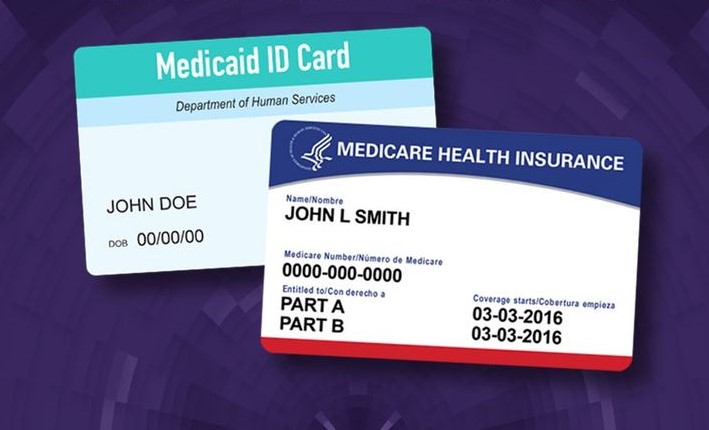What Is The Difference Between Medicare And Medicaid?

Medicare and Medicaid are two government-run health insurance programs in the United States, but they serve different populations and have different eligibility requirements. They are the two most important government-run healthcare programs in the United States, providing healthcare coverage to millions of Americans every year. Here is a brief history of the development of these programs.
In 1965, President Lyndon B. Johnson signed the Medicare program into law as part of the Social Security Act. The program was designed to provide health insurance coverage to Americans aged 65 and over, as well as those with certain disabilities or end-stage renal disease.
At the time, nearly half of all elderly Americans did not have health insurance, and many were unable to afford medical care. Medicare was created to address this issue, providing comprehensive health coverage to millions of seniors and disabled individuals.
Since its inception, Medicare has gone through many changes and expansions. In 1972, Congress extended coverage to Americans with long-term disabilities and end-stage renal disease, and in 2003, it added coverage for prescription drugs through the Medicare Part D program.Today, Medicare is a massive program that provides coverage to over 60 million Americans, with an estimated cost of over $700 billion in 2021.
Medicaid was also created as part of the Social Security Act in 1965, with the goal of providing healthcare coverage to low-income Americans. Initially, the program was designed to provide healthcare to certain categories of people, such as pregnant women, children, and the disabled.
Over time, Medicaid has expanded to cover more people and services. In 2010, the Affordable Care Act (ACA) expanded Medicaid eligibility to include all individuals with incomes up to 138% of the federal poverty level.
Today, Medicaid provides coverage to more than 70 million Americans, making it the largest provider of healthcare coverage in the country. It is jointly funded by the federal government and the states, with the federal government matching a portion of the funds provided by each state.
Understanding the differences between Medicare and Medicaid can help you determine which program may be right for you or a loved one.
Difference Between Medicare And Medicaid
Medicare is a federal health insurance program that provides coverage for people aged 65 and older, as well as younger people with certain disabilities or medical conditions. Medicare is funded through taxes and premiums paid by beneficiaries, and it is administered by the Centers for Medicare & Medicaid Services (CMS).
Medicare is divided into several parts, including:
• Medicare Part A: This covers hospitalization and inpatient care, as well as skilled nursing facility care, hospice care, and home health care.
• Medicare Part B: This covers outpatient medical services, including doctor visits, lab tests, diagnostic screenings, and medical equipment and supplies.
• Medicare Part C: Also known as Medicare Advantage, this is a privately offered alternative to traditional Medicare that includes additional benefits and services.
• Medicare Part D: This covers prescription drug costs.
Medicare beneficiaries can choose to enroll in traditional Medicare, or they can opt for a Medicare Advantage plan offered by a private insurance company. Medicare Advantage plans typically include additional benefits beyond those offered by traditional Medicare, such as dental and vision care, and they may have different rules and restrictions.
Medicaid, on the other hand, is a joint federal-state program that provides health coverage for low-income individuals and families, as well as people with certain disabilities or medical conditions. Medicaid is funded jointly by the federal government and the states, and it is administered by each state’s Department of Health and Human Services.
Medicaid covers a wide range of medical services, including doctor visits, hospitalization, prescription drugs, lab tests, and preventive care. Eligibility for Medicaid varies by state, but generally, you must have a low income and meet certain other criteria, such as being pregnant, having a disability, or being aged 65 or older.
In some states, Medicaid is available to all adults with incomes below a certain level, regardless of other factors. In other states, Medicaid is only available to certain populations, such as children, pregnant women, or people with disabilities.
One important difference between Medicare and Medicaid is that Medicare is an entitlement program, which means that anyone who is eligible for the program can enroll and receive benefits. Medicaid, on the other hand, is a means-tested program, which means that eligibility is based on income and other factors.
Another difference is that while Medicare covers a broad range of medical services, it may not cover all costs associated with those services. Medicare beneficiaries may still be responsible for paying deductibles, copayments, and other out-of-pocket expenses. Medicaid, on the other hand, generally has very low or no out-of-pocket costs for eligible individuals.
In summary, Medicare and Medicaid are both government-run health insurance programs, but they serve different populations and have different eligibility requirements. Medicare provides coverage for people aged 65 and older and people with certain disabilities or medical conditions, while Medicaid provides coverage for low-income individuals and families, as well as people with certain disabilities or medical conditions. If you are unsure which program may be right for you or a loved one, you can speak with a health insurance counselor or a representative from your state’s Department of Health and Human Services.
How To Apply For Medicaid
Medicaid provides healthcare coverage to low-income individuals and families. If you think you may be eligible for Medicaid, here are the steps you can take to apply:
1. Determine your eligibility: Medicaid eligibility requirements vary by state, but generally, you must have a low income and meet certain other requirements, such as being pregnant or having a disability. You can check your eligibility by contacting your state’s Medicaid office or visiting the official Medicaid website.
2. Gather required documentation: Before you apply for Medicaid, you will need to gather certain documents, such as proof of income, proof of identity, and proof of citizenship or legal residency. The specific documents required may vary by state, so check with your state’s Medicaid office for more information.
3. Fill out an application: You can apply for Medicaid online, by phone, by mail, or in person. To apply online, visit your state’s Medicaid website and follow the instructions. To apply by phone, call your state’s Medicaid office and a representative will assist you with the application. To apply by mail, request an application form from your state’s Medicaid office and mail it in with your supporting documentation. To apply in person, visit your local Medicaid office and complete the application with the assistance of a representative.
4. Wait for a decision: After you submit your application, you will need to wait for a decision from your state’s Medicaid office. The amount of time it takes to process your application may vary, but you should receive a decision within a few weeks.
5. If approved, choose a healthcare provider: Once you are approved for Medicaid, you will need to choose a healthcare provider who accepts Medicaid. Your state’s Medicaid office can provide you with a list of providers in your area.
How To Apply For Medicare
Medicare primarily covers people who are 65 years of age or older, as well as certain younger individuals with disabilities. If you are eligible for Medicare and would like to apply, here are the steps you can take:
1. Determine your eligibility: To be eligible for Medicare, you must be a U.S. citizen or a legal resident who has lived in the U.S. for at least five years and be 65 years of age or older, or have a qualifying disability or medical condition. You can check your eligibility by visiting the official Medicare website.
2. Choose your coverage: Medicare has different parts that cover different services, such as hospital stays, doctor visits, prescription drugs, and more. You will need to choose which parts of Medicare you want to enroll in based on your healthcare needs and budget.
3. Sign up for Medicare: You can sign up for Medicare by visiting the official Medicare website, calling the Social Security Administration at 1-800-772-1213, or visiting your local Social Security office in person. If you are already receiving Social Security benefits, you will be automatically enrolled in Medicare Parts A and B when you turn 65.
4. Enroll in a Medicare Advantage plan or Prescription Drug Plan (if applicable): If you choose to enroll in a Medicare Advantage plan or a Prescription Drug Plan, you will need to select a plan that meets your healthcare needs and budget. You can do this by visiting the official Medicare website and using the Plan Finder tool.
5. Pay your premiums: Depending on which parts of Medicare you enroll in and which additional plans you choose, you may need to pay premiums for your coverage. The cost of premiums can vary based on your income and other factors.
While Medicaid and Medicare are both valuable healthcare programs that can provide essential coverage to those who need it, there are a few cautions to keep in mind when applying:
1. Eligibility requirements: Medicaid and Medicare have specific eligibility requirements that must be met in order to receive coverage. Be sure to carefully review the requirements before applying to ensure that you meet them.
2. Application deadlines: There may be deadlines for applying for Medicaid or Medicare, so it’s important to apply as soon as you are eligible. Waiting too long to apply could result in a delay in coverage or even a denial of benefits.
3. Fraud: Unfortunately, there are individuals and companies that engage in healthcare fraud by offering fake healthcare plans or services in exchange for payment. To avoid becoming a victim of fraud, make sure you only apply for Medicaid or Medicare through official government channels, and be wary of any offers that seem too good to be true.
4. Cost: While Medicaid and some parts of Medicare are free or have low cost-sharing requirements, other parts of Medicare may require premiums, deductibles, and coinsurance. Make sure you understand the costs associated with each plan and choose one that fits within your budget.
5. Provider networks: Some Medicaid and Medicare plans have restricted provider networks, which means that you may be limited in your choice of healthcare providers. Be sure to check the provider network of any plan you are considering to ensure that you can receive care from the providers you prefer.
In summary, when applying for Medicaid or Medicare, it’s important to be aware of eligibility requirements, application deadlines, potential fraud, costs, and provider networks. By taking these factors into consideration, you can make an informed decision about which plan is right for you and avoid any potential pitfalls.





